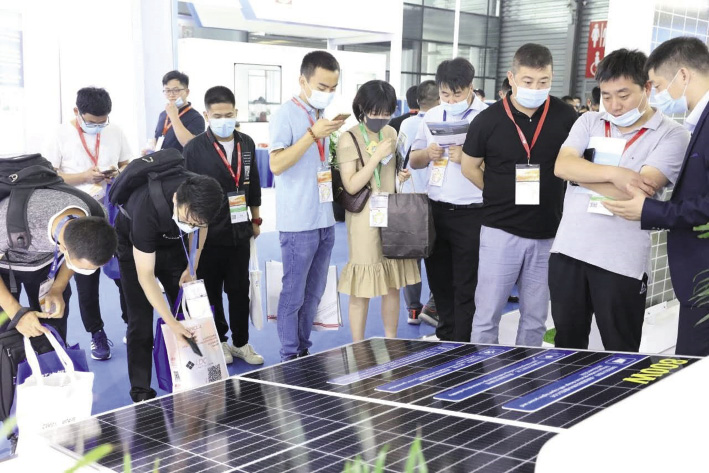For more than a year now, wafer size has been the number one debate in PV cell and module technology. From the earlier standard of 156.75mm, manufacturers quickly went through several iterations to reach the situation today, where two sizes – 182mm and 210mm, are expected to represent the bulk of the market for the next few years at least.
These two sizes have seen the industry quickly divide into two camps, some preferring the 182mm product introduced by Longi, and others backing the larger 210mm wafer manufactured by Zhonghuan semiconductor. The newest modules based on these wafers are only now moving into mass production and beginning to go through field testing, which will show whether either has a particular advantage.
In a new white paper, module manufacturer JA Solar describes a comparative study carried out in collaboration with TÜV Nord that seeks to investigate difference in performance between the products. JA Solar initially exhibited a product based on the 210mm wafer at last year’s SNEC exhibition, but has since come to focus more on the 182mm dimension in its ‘DeepBlue’ module range.
Comparative study
The study is based on both simulations and field installations, with both module types in operation at Yinchuan National Photovoltaic Experimental Base. In simulations under unspecified conditions, the paper claims the 182mm modules generated 1.8% more electricity per year than the 210mm product, and achieved an LCOE of $0.0292/kWh – which was 0.04-0.08 cents/kWh lower than the 210mm module simulated.
The losses are largely blamed on the higher currents seen in the largest modules, and the resulting higher operating temperatures. “The heat loss of super-large current module B is 0.53% higher than that of 182 module,” they claim. “If we take a 3 GW project as an example, because of the direct heat loss, the super-large current modules will generate 20 GWh less electricity than 182 modules per year.”
At the testing site in Yinchuan, the study found that the 210mm products had an average temperature 1.8 degrees Celsius higher than the smaller wafer modules, and a maximum temperature difference of 5 degrees. “each degree-Celsius increase in working temperature will make the power decrease by about 0.35%,” JA states in the study. “It can be seen from data of the demonstration system, with influence of various factors, the average energy yield per watt of the 182 module is about 1.8% higher than that of the super-large current module.”
Performance risks
The study further notes that these larger currents place a heavier burden on other system components, particularly the junction box, cables and connectors. Noting that junction boxes should have a rated current at least 1.25 times the short circuit current of the module, they find that the 182mm product can still use the standard 25amp junction box, while the 210mm product would still be outside of the margin with a larger, 30 amp box. And on the cabling side, they note that for rooftop installations, in particular, larger cables than usual will be needed to mitigate the risk of overheating failure and even fires.
Compatibility of other balance of systems components, the inverter in particular, was initially a concern for all of the new modules, however, JA finds that this has been effectively addressed with suitable products available for all module sizes.
Overall, while JA Solar finds a small advantage for the 182mm products in this study, it may not play out the same for every installation in every situation. And it’s likely in any case that both will remain on the market for the next few years at least. JA Solar concludes its study, however, by stating that its work clearly shows that module sizes have reached their practical limit, and any further increases will not necessarily achieve lower systems costs, finding that “…there is a significant decrease in power generation performance and an increase in safety risks.”
And the company calls on the PV industry to return its focus to innovations, rather than simple size optimizations, to keep on improving performance. “the focus of the industry in the future should be switched towards efficiency and energy yield improvement via technological progress,” they conclude.
This content is protected by copyright and may not be reused. If you want to cooperate with us and would like to reuse some of our content, please contact: editors@pv-magazine.com.




1 comment
By submitting this form you agree to pv magazine using your data for the purposes of publishing your comment.
Your personal data will only be disclosed or otherwise transmitted to third parties for the purposes of spam filtering or if this is necessary for technical maintenance of the website. Any other transfer to third parties will not take place unless this is justified on the basis of applicable data protection regulations or if pv magazine is legally obliged to do so.
You may revoke this consent at any time with effect for the future, in which case your personal data will be deleted immediately. Otherwise, your data will be deleted if pv magazine has processed your request or the purpose of data storage is fulfilled.
Further information on data privacy can be found in our Data Protection Policy.